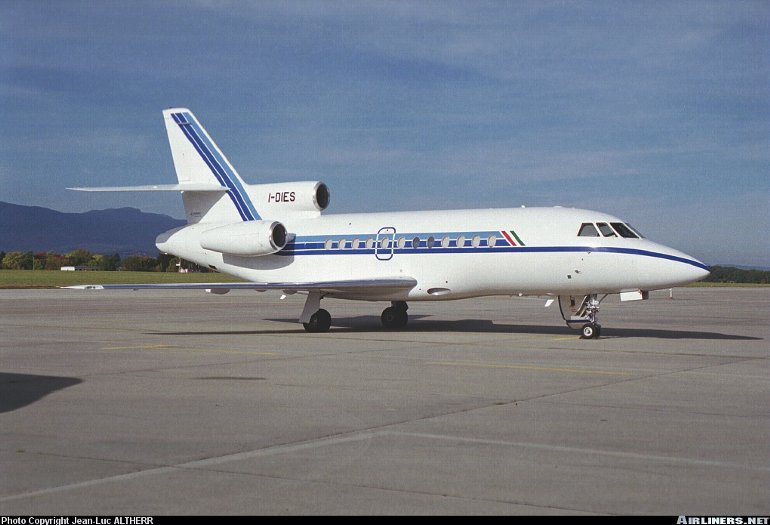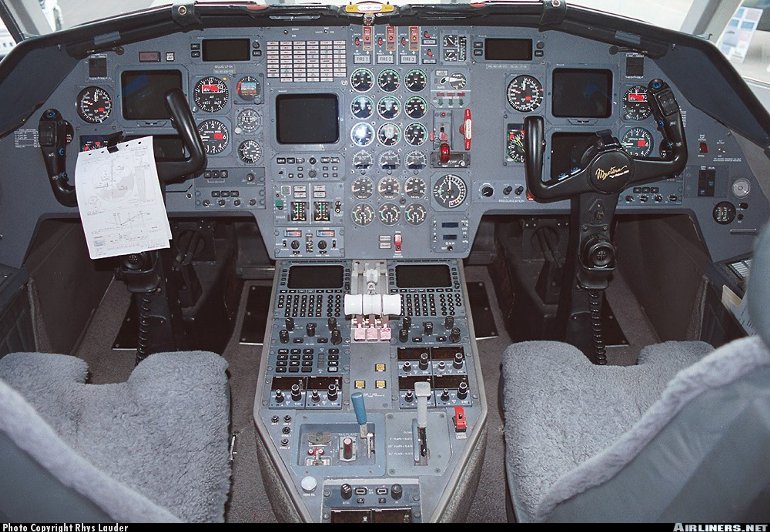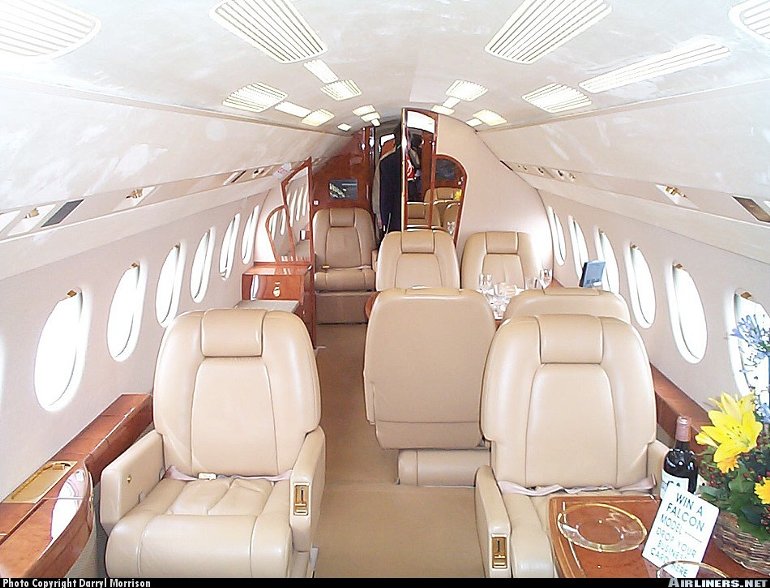Aircraft Technical Data
Dassault Falcon 900



| Details | |
| Country of Origin | France |
| Type | Large transcontinental range corporate jet |
| History | The Falcon 900 intercontinental range trijet is a substantially revised development of the Falcon 50. Dassault announced it was developing a new intercontinental range large size business jet based on the Falcon 50 on May 27 1983 at the Paris Airshow. The prototype, "Spirit of Lafayette", flew for the first time on September 21 1984. A second prototype flew on August 30 1985, and this aircraft demonstrated the type's long range potential by flying nonstop from Paris to Little Rock, Arkansas in the USA for a demonstration tour. French certification was awarded on March 14 1986, FAA certification followed on March 21, and first customer deliveries occurred in December that year. While of similar overall configuration to the Falcon 50, the Falcon 900 intoduced an all new wider and longer fuselage which can seat three passengers abreast. The main commonality with the Falcon 50 is the wing, which despite being designed for a considerably lighter aircraft, was adapted almost directly unchanged. In designing the Falcon 900 Dassault made use of computer aided modelling, while the aircraft's structure incorporates a degree of composite materials. Two Falcon 900s entered service with the Japanese Maritime Safety Agency for the long-range maritime surveillance role as the Falcon 900MSA, equipped with search radar, special communications equipment, observation windows, a control station, and a drop hatch. From 1991 the standard production model was the Falcon 900B, which differs from the earlier 900 in having more powerful engines, increased range, the ability to operate from unprepared strips and Category II visibility approach clearance. Earlier production 900s can be retrofitted to 900B standard. The Falcon 900EX is a longer range development launched in October 1994. It features TFE731-60 engines, a Honeywell Primus 2000 EFIS avionics suite, optional Flight Dynamics head-up displays, increased fuel capacity and greater range. Its first flight was on June 1 1995 and first delivery was in May 1996. The latest Falcon 900 model is the 900C. Revealed in 1998, the C is a development of the B but incorporates the advanced Honeywell Primus avionics of the 900EX, but without autothrottles. The 900C replaced the 900B in the Falcon product line with first deliveries in early 2000. From 2003 the 900EX will introduce Dassault's EASy avionics operating system with four colour displays, cursor control devices and multifunction keyboards. |
| Powerplants | 900B - Three 21.1kN (4750lb) AlliedSignal TFE731-5BRs. 900EX - Three 22.3kN (5000lb) TFE731-60s. |
| Performance | 900B - Max cruising speed 927km/h (500kt), economical cruising speed Mach 0.75. Max certificated altitude 51,000ft. Range with 15 passenger and reserves 7116km (3840nm), with eight passengers and reserves at Mach 0.80 7150km (3860nm). 900EX - Range with eight passengers at Mach 0.80 8020km (4330nm), at long range cruising speed 8335km (4500nm). |
| Weights | 900B - Empty equipped 10,255kg (22,611lb), max takeoff 20,640kg (45,500lb). 900EX - Empty equipped 10,830kg (23,875lb), max takeoff 21,909kg (48,300lb). |
| Dimensions | Wing span 19.33m (63ft 5in), length 20.21m (66ft 4in), height 7.55m (24ft 9in). Wing area 49.0m2 (527.43sq ft). |
| Capacity | Flightcrew of two. Main passenger cabin seating for between eight and 15 passengers, or up to 18 in a high density configuration |
| Production | Over 260 Falcon 900s (including 7 900Cs, 74 900EXs, and 2 900MSAs) delivered by mid 2000. |
| Related Links | Dassault Falcon 900 |
The backbone of this section is from the The International Directory of Civil Aircraft by Gerard Frawley and used with permission. To get your own copy of the book click here. |
|








